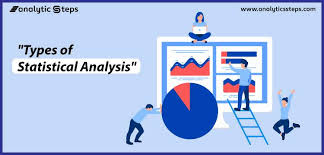The Power of Data Analysis
Data analysis is the process of inspecting, cleansing, transforming, and modelling data to uncover meaningful insights that can be used to make informed decisions. In today’s data-driven world, the ability to effectively analyse data has become a crucial skill for businesses and organisations across all industries.
Why Data Analysis Matters
By harnessing the power of data analysis, businesses can gain valuable insights into customer behaviour, market trends, operational efficiency, and more. These insights enable organisations to make strategic decisions that drive growth, improve performance, and stay ahead of the competition.
The Process of Data Analysis
Data analysis typically involves several key steps, including data collection, data cleaning, data exploration, statistical analysis, and data visualisation. Through these steps, analysts can identify patterns, trends, and correlations within the data that can inform decision-making processes.
The Role of Technology in Data Analysis
Advancements in technology have revolutionised the field of data analysis. Today, powerful tools and software platforms allow analysts to process large volumes of data quickly and efficiently. Additionally, artificial intelligence and machine learning algorithms have enabled more advanced predictive analytics capabilities.
The Benefits of Data Analysis
Effective data analysis offers a wide range of benefits for businesses, including improved decision-making processes, enhanced operational efficiency, better understanding of customer needs and preferences, identification of opportunities for growth and innovation, and mitigation of risks.
Conclusion
In conclusion, data analysis plays a critical role in helping businesses unlock the full potential of their data. By leveraging the power of data analysis techniques and technologies, organisations can gain a competitive edge in today’s fast-paced business environment and drive success through informed decision-making.
7 Essential Tips for Effective Data Analysis
- Ensure data quality by cleaning and preprocessing the data before analysis.
- Define clear objectives and questions to guide your analysis.
- Choose the right tools and techniques based on the type of data and analysis needed.
- Visualise data using charts, graphs, or dashboards to communicate findings effectively.
- Perform statistical tests to validate hypotheses and draw meaningful conclusions.
- Document your process, assumptions, and results for transparency and reproducibility.
- Continuously learn new methods and stay updated with trends in data analysis.
Ensure data quality by cleaning and preprocessing the data before analysis.
Ensuring data quality is paramount in the process of data analysis. By meticulously cleaning and preprocessing the data before analysis, analysts can eliminate errors, inconsistencies, and missing values that could skew results and lead to inaccurate conclusions. This crucial step not only improves the reliability of the analysis but also enhances the overall effectiveness of decision-making based on the insights derived from the data. A thorough data cleaning and preprocessing process lays a solid foundation for robust and insightful data analysis, ultimately enabling businesses to make informed decisions with confidence.
Define clear objectives and questions to guide your analysis.
To ensure effective data analysis, it is essential to define clear objectives and formulate precise questions that will guide the analysis process. By establishing specific goals and outlining the key questions to be answered, analysts can focus their efforts on extracting relevant insights from the data. This strategic approach not only streamlines the analysis process but also ensures that the outcomes align with the overarching objectives of the project, ultimately leading to more meaningful and actionable results.
Choose the right tools and techniques based on the type of data and analysis needed.
When engaging in data analysis, it is essential to select the appropriate tools and techniques that align with the specific type of data and analysis requirements. By choosing the right tools tailored to the nature of the data being analysed and the desired insights, analysts can enhance the accuracy and efficiency of their analysis process. Different types of data may require distinct approaches, such as statistical methods, machine learning algorithms, or data visualisation tools. This strategic selection ensures that the analysis is conducted effectively and yields valuable results that can drive informed decision-making within an organisation.
Visualise data using charts, graphs, or dashboards to communicate findings effectively.
Visualising data using charts, graphs, or dashboards is a powerful tip in data analysis as it allows for the effective communication of findings. By presenting complex data in a visual format, such as through interactive graphs or intuitive dashboards, analysts can convey insights in a clear and compelling manner. Visualisations not only make it easier for stakeholders to understand the data but also help in identifying patterns, trends, and outliers more efficiently. Ultimately, visualising data enhances the impact of analysis results and facilitates informed decision-making processes within organisations.
Perform statistical tests to validate hypotheses and draw meaningful conclusions.
Performing statistical tests is a crucial step in data analysis to validate hypotheses and draw meaningful conclusions. By applying appropriate statistical methods, analysts can determine the significance of relationships within the data, identify patterns or trends, and make informed decisions based on solid evidence. Statistical tests help ensure the reliability and accuracy of findings, allowing businesses to confidently act on the insights derived from their data analysis efforts.
Document your process, assumptions, and results for transparency and reproducibility.
When engaging in data analysis, it is essential to document your process, assumptions, and results meticulously to ensure transparency and reproducibility. By clearly outlining the steps taken, the underlying assumptions made, and the outcomes obtained during the analysis, you not only enhance the credibility of your findings but also enable others to replicate and validate your work. Documenting these aspects of your data analysis process promotes accountability, fosters trust in the results generated, and facilitates collaboration among peers in the field of data science.
Continuously learn new methods and stay updated with trends in data analysis.
To excel in data analysis, it is essential to continuously expand your knowledge by learning new methods and staying updated with the latest trends in the field. By keeping abreast of advancements in data analysis techniques and technologies, you can enhance your analytical skills, improve the quality of insights derived from data, and adapt to evolving industry requirements. Embracing a mindset of lifelong learning ensures that you remain competitive and effective in leveraging data to drive informed decision-making and achieve business objectives.






